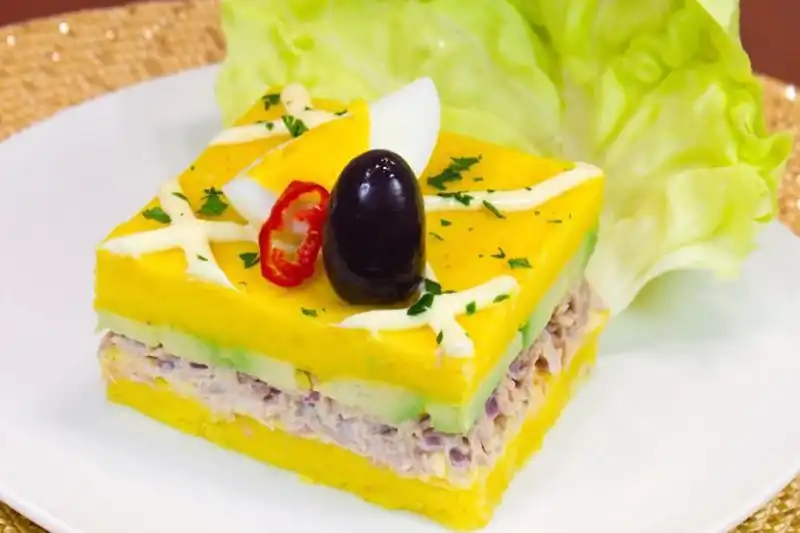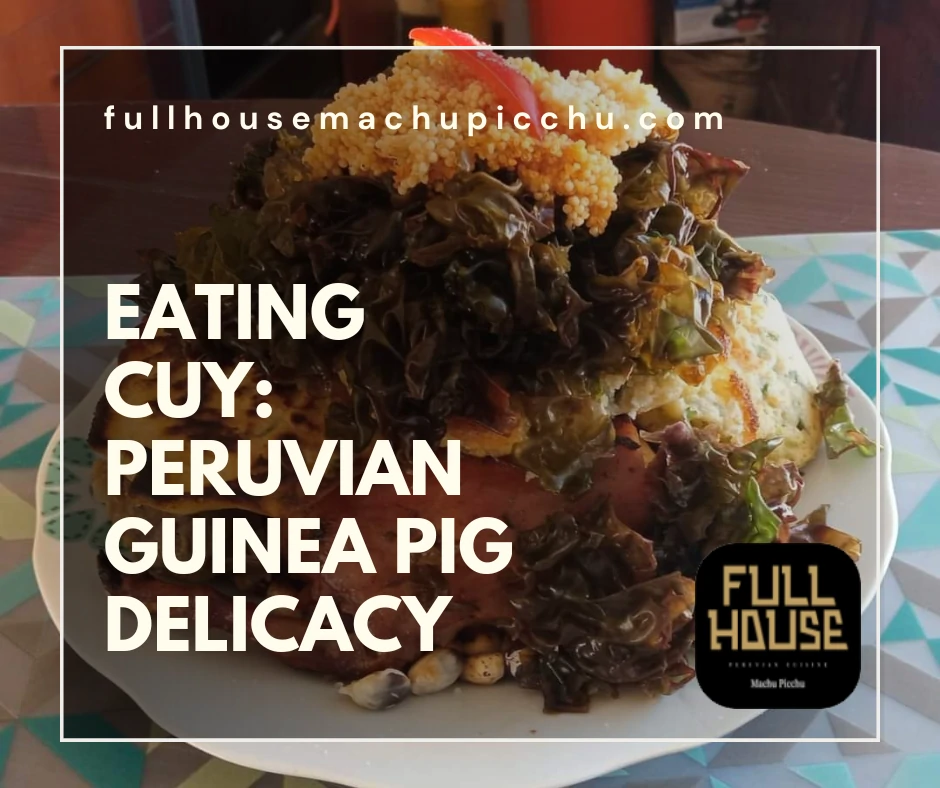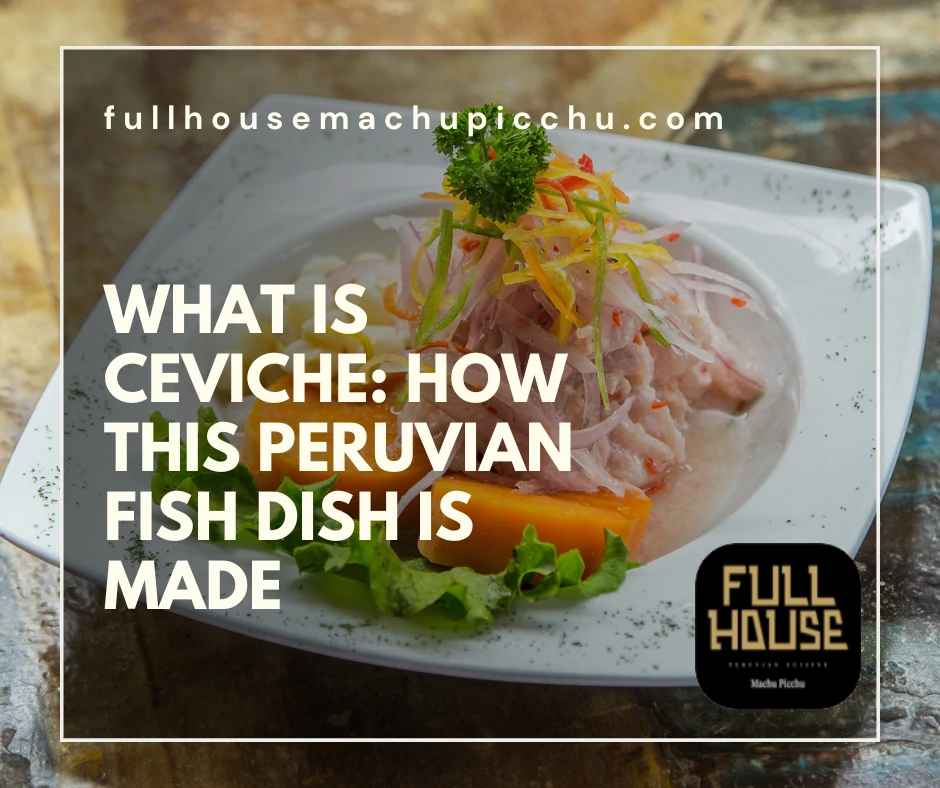Peruvian Causa is more than a meal; it’s a cultural experience. This dish is a beloved symbol of Peru’s rich heritage. Each bite tells a story of creativity.
Causa layers flavors as intricately as its history. It combines local ingredients with culinary techniques passed down through generations. This dish showcases the diversity of Peru’s versatility with simple ingredients.
The Causa has an interesting history and great flavor. It’s a testament to the country’s developing traditions. We’ll delve into why Causa is a taste of Peru itself. And if you visit, maybe try Causa with us sampling our menu.
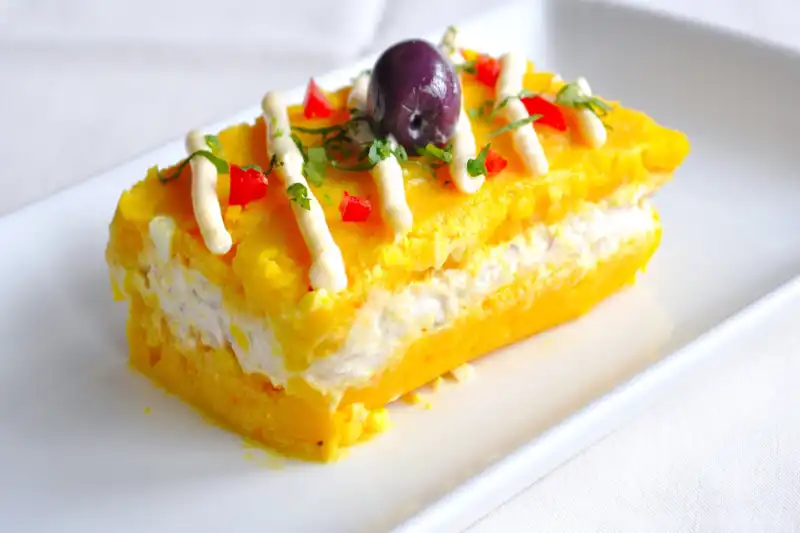
Exploring Causa: From Classic Limeña to Comfort Food
Peruvian Causa stands out in the world of comfort foods. This layered dish reflects the simplicity and richness of Peruvian cuisine. Its base consists of layers of mashed potato, seasoned with lime juice and aji amarillo.
Typically, chefs use papa amarilla (peruvian yellow potato). An international potato variety similar would be the yukon gold or russet potatoes.
They season the potato mixture with salt and mix in a bit of olive oil for smoothness. This creates a flavorful foundation that complements various toppings.
Popular Variations of Peruvian Causa
One beloved variant is the tuna causa, where a layer of tuna salad sits between the potato layers. This salad often contains mayonnaise, onions, and seasonings, adding a rich flavor. Avocado slices or a layer of sliced avocado often top the assembly, adding freshness and a creamy texture.
Another popular version is the chicken causa, which substitutes the tuna with a seasoned chicken salad. Both variations might include layers of hard-boiled eggs, black olives, or even red bell peppers. These ingredients not only add to the taste but also make the dish colorful and appealing.
Assembly and Serving Tips
To assemble, chefs often line a casserole dish with plastic wrap for easy molding. They then layer the potato salad base, followed by the protein salad, and another potato layer. Pressing down each layer ensures they meld together well.
Once assembled, they cover it with plastic wrap and refrigerate to set. This step is crucial as it allows the flavors to blend beautifully. To serve, they invert the causa onto a plate, remove the wrap, and garnish with olive oil, lime juice, or slices of avocado.
Why Peruvian Causa Captures Hearts
Peruvian Causa isn’t just food; it’s a part of Peru’s soul. Its versatility allows it to be a perfect dish for any occasion. Whether served cold at a summer gathering or as a hearty winter meal, it remains a favorite.
The beauty of Peruvian Causa lies in its adaptability. With just a few ingredients like salt, pepper, and lime, it transforms simple potatoes into a gourmet delight. This dish truly embodies the spirit of Peruvian food.
Historical Roots: Causa’s Role in Peru’s Fight for Independence
Peruvian Causa carries a rich history that extends beyond its culinary delight. Originating during the colonial period, its name is deeply meaningful. “Causa” translates to “cause” in Spanish, symbolizing the dish’s role in Peru’s fight for independence.
The first iterations of Causa were simple yet nourishing. They consisted primarily of layers of mashed potatoes. Local cooks seasoned these layers with lime juice and aji amarillo, a native Peruvian pepper. This combination provided sustenance to the soldiers and citizens alike.
The dish’s simplicity allowed for mass preparation and easy distribution among the troops. It was a vital source of energy during the arduous fight against Spanish rule. The name “Causa” reflects its connection to the independence movement, representing food made for a patriotic cause.
Compromised women during the fight for independence prepared this dish. The main ingredients were cheap, potatoes, spices and fish. They went on the streets selling this humble meal to raise money for the independence army.
These women yelled “Por la causa”, which translates to “for the cause”. That is how the dish got its name. As a humble, improvise street food.
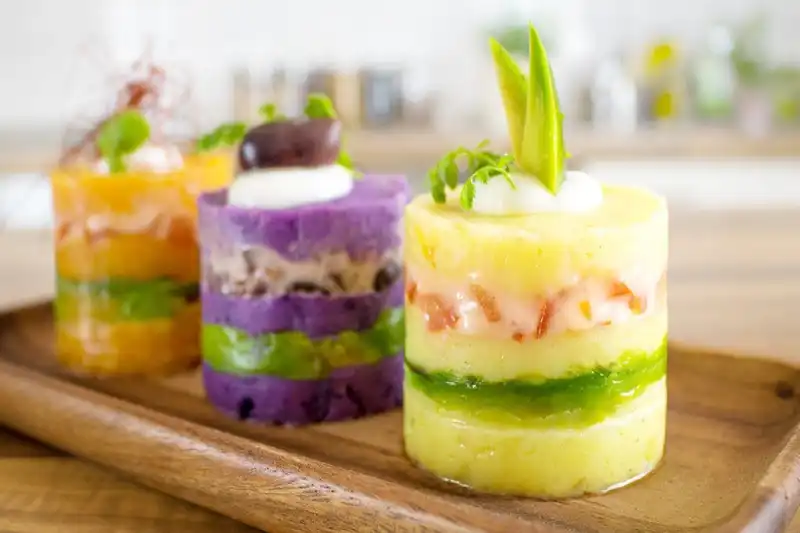
Causa: A Symbol of Unity and Perseverance
As the years passed, Peruvian Causa evolved, incorporating other local ingredients. Avocado slices, olive oil, and occasionally tuna or chicken salads became part of the dish. Despite these variations, its core—layers of seasoned mashed potatoes—remained unchanged.
Peruvians often prepared Causa in large quantities to feed communities. They used ingredients like papa amarilla, which were abundant and easy to cook. This practice helped unify people under a common goal: freedom from colonial rule.
Today, Peruvian Causa is a symbol of national pride. It is a culinary expression of Peru’s rich history and perseverance. Each layer tells a story of past hardships and communal efforts for a better future.
This dish serves as a testament to the resilience and creativity of the Peruvian people. It has transformed from a simple meal for freedom fighters into a beloved staple of Peruvian cuisine. Causa continues to be a source of national identity and pride for all Peruvians.
Causa Today: Innovation and Enduring Popularity in Peruvian Cuisine
Peruvian Causa continues to captivate palates both locally and globally. This dish combines traditional flavors with modern twists, showcasing Peru’s culinary innovation. It remains a beloved staple in Peruvian cuisine.
Chefs across Peru and beyond have embraced the versatility of Causa. They experiment with various fillings and presentations, elevating the dish to new heights. Each variation reflects local preferences and culinary creativity.
The classic Causa layers mashed potatoes with lime juice and aji amarillo for zest and spice. Modern versions might include additional layers like tuna or chicken salad. These adaptations keep the dish relevant and exciting.
Adapting Tradition to Modern Tastes
In recent years, the presentation of Peruvian Causa has become more sophisticated. Chefs use casserole dishes or individual molds to shape the layers neatly. This attention to detail makes Causa not only delicious but also visually appealing.
Innovative chefs often incorporate ingredients like black olives or avocado slices. These add richness and texture, enhancing the overall flavor profile. Olive oil is another common addition, providing smoothness to the potato layers.
Restaurants and home cooks alike enjoy serving Causa cold, making it a perfect dish for warm climates. It’s ideal for gatherings and celebrations, often prepared in advance and refrigerated until serving. This convenience adds to its popularity.
Peruvian Causa: A Culinary Icon
Peruvian Causa remains a symbol of national identity and pride. Its enduring popularity is a testament to the dish’s deep roots in Peruvian culture. It’s more than just food; it’s a celebration of Peru’s rich culinary heritage.
The adaptability of Causa allows it to continually evolve while maintaining its core elements. Whether it’s a simple family meal or a gourmet restaurant offering, Causa holds a special place for many.
As Peruvian cuisine gains international recognition, Causa leads as one of its most iconic dishes. It embodies the spirit of Peru, combining tradition with innovation in every delicious layer.
